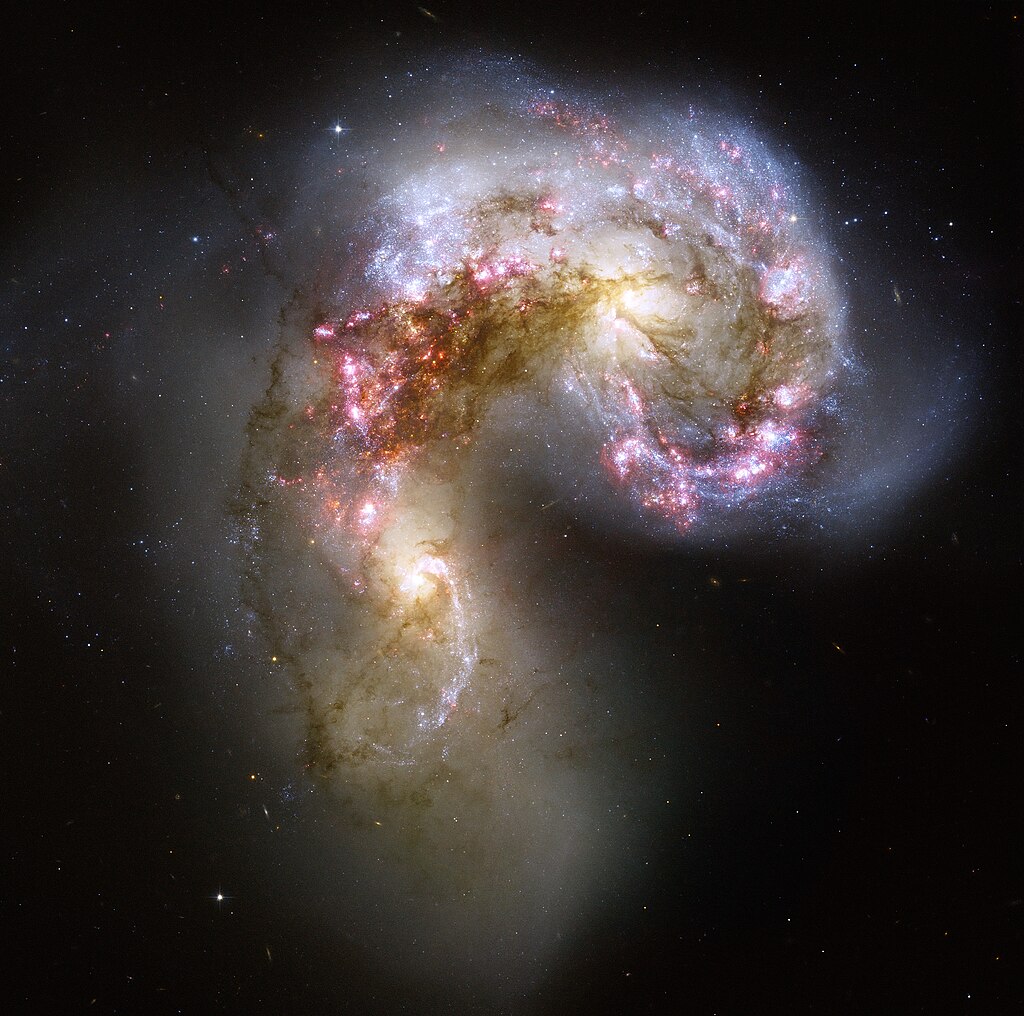Antennae galaxies xl
“ The two spiral galaxies started to interact a few hundred million years ago, making the Antennae galaxies one of the nearest and youngest examples of a pair of colliding galaxies. Nearly half of the faint objects in the Antennae image are young clusters containing tens of thousands of stars. The orange blobs to the left and right of image center are the two cores of the original galaxies and consist mainly of old stars criss-crossed by filaments of dust, which appear brown in the image. The two galaxies are dotted with brilliant blue star-forming regions surrounded by glowing hydrogen gas, appearing in the image in pink.”
Relevante Bilder




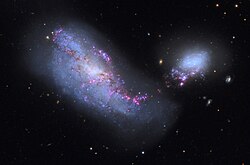


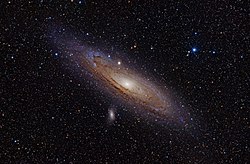


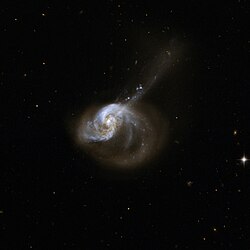

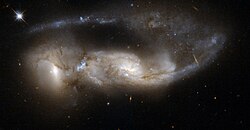







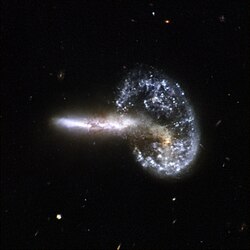




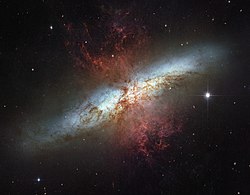















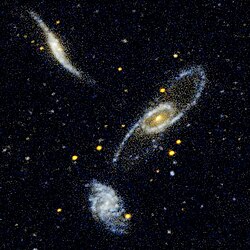
Relevante Artikel
Atlas of Peculiar GalaxiesDer Atlas of Peculiar Galaxies ist ein astronomischer Katalog. In ihm sind 338 ungewöhnliche Galaxien mit photographischen Aufnahmen aufgeführt. .. weiterlesen
GalaxieEine Galaxie ist eine durch Gravitation gebundene große Ansammlung von Sternen, Planetensystemen, Gasnebeln, Staubwolken, Dunkler Materie und sonstigen astronomischen Objekten mit einer Gesamtmasse von typischerweise 109 bis 1013 Sonnenmassen (M☉). Ihr Durchmesser kann mehrere hunderttausend Lichtjahre betragen. Während große Galaxien häufig die Struktur von Spiralen ausbilden, sind Zwerggalaxien zumeist irregulären Typs. Daneben existieren weitere Arten und Formen. Die Milchstraße, Heimatgalaxie unseres Sonnensystems, ist eine Balkenspirale von rund 1,5 Billionen M☉ mit etwa 250 Milliarden Sternen. Von der Erde aus lassen sich mit aktueller Technik mehr als 50 Milliarden Galaxien beobachten. Seit 2016 geht die Forschung davon aus, dass sich im beobachtbaren Universum ca. eine Billion Galaxien befinden. .. weiterlesen
Caldwell-KatalogDer Caldwell-Katalog ist eine amateurastronomische Beobachtungsliste mit einer Auswahl von 109 für Beobachtungen der Amateurastronomie interessanten Deep-Sky-Objekten wie hellen Sternhaufen, Nebeln und Galaxien. Die Liste wurde zusammengestellt durch Sir Patrick Caldwell-Moore als eine Ergänzung zum Messier-Katalog. .. weiterlesen
